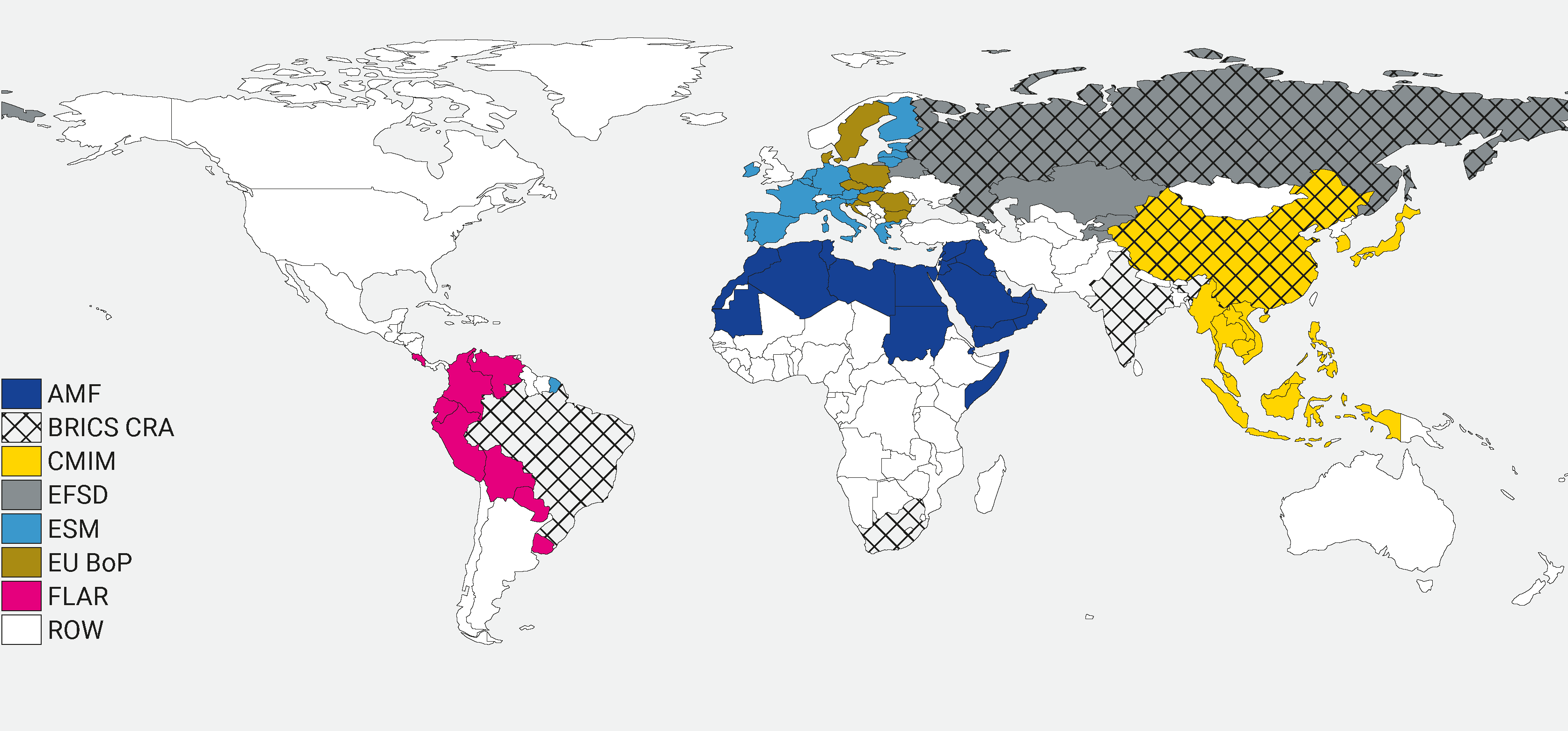Regional rescue funds and the IMF – the time for deeper cooperation is now

“We are all in this together” — with these words, ESM Managing Director Klaus Regling began his remarks at the April virtual meeting with Kristalina Georgieva, Managing Director of the International Monetary Fund (IMF), and the heads of regional rescue funds from around the globe. The IMF and the regional crisis fighters, known as the Regional Financing Arrangements (RFAs), are working hard to mitigate the impact of the Covid-19 outbreak on members. Together, these institutions have about €1.8 trillion of combined firepower.
The IMF, which is at the centre of the Global Financial Safety Net (GFSN), has swiftly implemented a package of actions, including a doubling of access to rapid financing.[1] RFAs, in line with their established role in the international financial architecture, are reviewing their instruments and policies to be able to provide emergency liquidity, fast-tracking lending requests, and helping authorities with policy advice or technical assistance. The ESM, as part of the comprehensive European response to the corona crisis, has made available Pandemic Crisis Support to all euro area member states. This credit line complements the efforts at national level, and will help countries to finance direct and indirect healthcare, cure, and prevention-related costs to the Covid-19 crisis. Each euro area country will be able to access 2% of its respective 2019 gross domestic product, which would amount to around €240 billion if all credit lines were drawn.
Figure 1: Geographical coverage and membership of RFAs
Source: Cheng, G. et. al (2018). Note: The figure does not represent graphically the EU Macro-Financial Assistance, as the coverage of this facility is determined on a case-by-case basis and subject to ex-ante qualification criteria.
The April high-level call did not bring together strangers, but rather reinforced the bonds of an important safety net. It was a gloomy October day in 2016 when Regling headed to F-Street in Washington D.C., to meet his RFA peers from around the world for the first high-level dialogue. No one knew for sure if this exchange, initiated by the ESM in cooperation with regional partners from Latin America and Asia, would bear any fruit. At the time, the recovery from the global financial crisis was gathering pace and a new economic slowdown of similar scope was not in sight. Nevertheless, the heads of the seven RFAs who attended the meeting recognised the benefits of a multilateral dialogue and the value of sharing crisis management experiences. Since that initial event, RFAs have gained valuable knowledge from each other through the launch of annual research seminars, the publication of joint RFA staff papers, and the continuous dialogue with the IMF. In fact, it was Christine Lagarde, then IMF Managing Director, who joined the RFA high-level table in 2017 to enthuse others through her personal advocacy and drive. Last October, her successor, Georgieva, underscored the importance of dialogue between the IMF and RFAs for promoting global economic stability.
The world now faces an enormous challenge. Both the magnitude and speed of the current crisis are unprecedented. In addition to the immeasurable human costs, the pandemic is expected to cause the worst economic downturn since the Great Depression.[2] Over 100 out of the 189 members globally have approached the IMF for emergency financing — a number that underlines the severity of this crisis better than any words. No country will be spared — so, indeed, we are in this together. At the same time, the ability of countries to absorb the current shock varies significantly. The mandates and lending capacities of the RFAs are also diverse, with some regions better protected than others. This is why, to avoid economic fragmentation, now more than ever, the RFAs and the IMF need to cooperate more closely in the area of surveillance, policy and institutional capacity building, and financing. Such collaboration contributes to a more efficient mobilisation of both expertise and resources available throughout the GFSN. The inter-institutional ties that the RFAs and IMF have developed over the past few years will be of a great value to that end.
“Only if every single country in the world gets the help it needs, can we call ourselves successful”. With these words, Georgieva closed the virtual meeting. It is now time to act together.
In June, the chief economists of the IMF and the RFAs will hold a call to share their assessment of the global and regional economic situation.
Further reading
Cheng, G., Miernik, D. and Turani, T. ESM (2020), Finding complementarities in IMF and RFA toolkits, ESM Discussion paper 8.
About the ESM blog: The blog is a forum for the views of the European Stability Mechanism (ESM) staff and officials on economic, financial and policy issues of the day. The views expressed are those of the author(s) and do not necessarily represent the views of the ESM and its Board of Governors, Board of Directors or the Management Board.
Authors


Blog manager

